A Lancastrian Prince in Ireland
Published in Features, Issue 1 (Spring 1998), Medieval History (pre-1500), Volume 6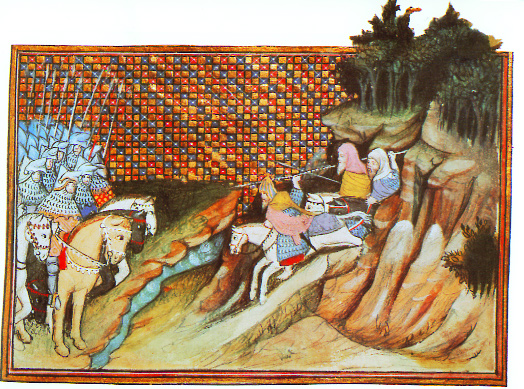
The forces of Richard II (left) face Art MacMurrough (right) in battle.
In 1399, according to a letter sent by the Irish council to Henry IV, the new king of England, because there were no soldiers for the defence of Ireland and no money there in order to engage new ones, ‘the land is in danger of final destruction’. The letter outlined the problems facing the English lordship in Ireland at the end of the fourteenth century. Art MacMurrough had risen in rebellion after the departure of Richard II, claiming he would not make peace until an annuity of eighty marks and his wife’s inheritance in the barony of Norragh had been restored to him. MacMurrough had gone to Munster to help the Earl of Desmond in his feud with the Earl of Ormond. In Ulster the O’Neill had also gathered a large force and was threatening war unless his son and cousins, who were being held as hostages in Dublin Castle, were released. According to the letter, ‘the English marchers are not able, nor are they willing to ride against them [the Irish] without stronger paramount power’. Under the circumstances the only stronger paramount power was an English army. Of the English lordship in Ireland only the county of Dublin and part of the county of Kildare provided any revenue for the Irish exchequer. The Irish council was appealing to the new king to mount a royal expedition to Ireland, or at least send an expedition under the command of a substantial and capable nobleman, in order to save the lordship from complete destruction.
Thomas of Lancaster’s appointment
Partly in response to this letter Henry IV appointed his second son, Thomas of Lancaster, as lieutenant of Ireland on 27 June 1401. However, in 1401 he was a mere thirteen years old. It is likely that Lancaster was sent to Ireland in order to secure the loyalty of the lordship for the new dynasty. In September 1400 Henry IV was faced by a rebellion in Wales led by Owain Glyndwr, who had sent messengers to Ireland to encourage the Irish to join him. These messengers had been captured and beheaded but the potential threat to Henry IV from Ireland was clear. As lieutenant, Lancaster was expected to protect the existing lordship from the incursions of the Irish while at the same time attempting to regain territory already lost. This was to be achieved without either the financial or military resources available to King Richard II, whose two expeditions to Ireland in the 1390s had failed to halt the decline in English authority.
Lancaster arrived in Ireland on 13 November 1401, preceded in August by his deputy Stephen le Scrope who had immediately set about securing submissions from Irish lords. Le Scrope used his modest forces to good effect: by 14 September 1401 he secured the submission of the O’Connor Falys, followed by the O’Byrnes of Wicklow on 8 November. In December he turned his attention to the north securing the submission of the MacMahons of Oirghialla on 13 December, followed on 4 February 1402 by the O’Reillys of Breifne. These Irish lordships were situated on the borders of the English settlement, thus le Scrope removed significant threats to the position of his master, Thomas of Lancaster. It has been suggested that by the early 1400s the Dublin administration was concentrating on maintaining the core settlement areas around Dublin and that it was coming to terms with its large, neighbouring, Irish powers. It is possible that what le Scrope had in mind was to ensure the stability of the lordship in Leinster, perhaps because that was the only part of the lordship that he could defend adequately. In December 1401 le Scrope was appointed as Thomas of Lancaster’s deputy, as well as his governor of the wars.
The war in Offaly
The O’Connor Falys had been the first to submit to le Scrope in 1401. They had been involved in a long-running conflict with the Daltons of Meath and had been trying to expand their influence westward for some time. It perhaps suited their immediate purposes to submit at this time, for in 1403 the Dublin government organised a retaliatory raid into Offaly and took some hostages, indicating that the O’Connor Falys had failed to keep the terms of the agreement made with le Scrope. In 1404 the O’Connor Falys raided Dalton territory and burned Rathskeagh, described as Henry Dalton’s town and the most flourishing in Ireland. From 1405 onwards raids by the O’Connor Falys become more common with a hosting that year into Westmeath resulting in much of the country being burned. Further raids are recorded in 1406, 1408, 1411 (when the sheriff of Meath was captured), 1414 and 1417. It is significant that in 1405 both Thomas of Lancaster and Stephen le Scrope were absent in England. The annals note that in 1405 ‘the Earl of Ormond, i.e. James Butler, died, and the Galls were very powerless after that’. With the death of one of the foremost Anglo-Irish magnates coming at the same time as the absence of the lieutenant and his deputy, the Irish would obviously be encouraged to increase their raids on the lordship.
Relations with the O’Byrnes
According to an indenture entered into with Lancaster, Donal O’Byrne of Wicklow promised ‘to be a faithful liege to the king and to conduct himself faithfully towards the king’s people’. O’Byrne also promised not to rise up with enemies or rebels of the king, but to serve the king against them with his subjects. Furthermore, he promised to stop taking vadia from the king’s people for any injuries done by them against O’Byrne or his people, but instead to approach the lieutenant or the justices of the peace within one month of the event taking place. O’Byrne pledged to make amends for all injuries and damages caused by the O’Byrnes against ‘any of the marchers or faithful people of the king’ in time of peace in return for a reciprocal agreement from the English.
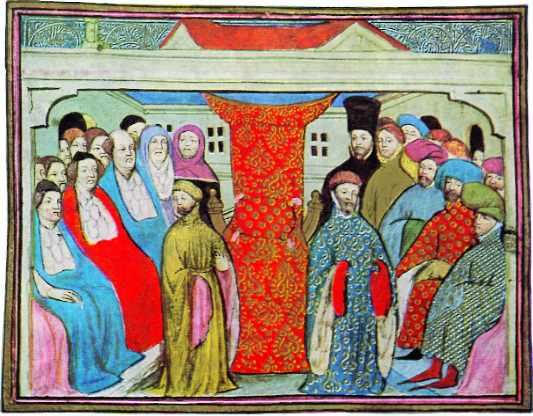
Henry IV claims his crown before parliament. (British Library)
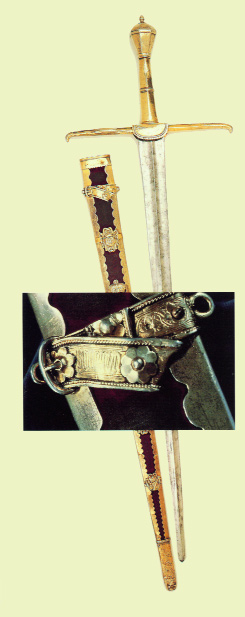
The Great Dublin Civic Sword-once the personal weapon of Henry IV. (Dublin Corporation)
If any of his men were to rise against the king, O’Byrne promised to deliver the body or head of the rebel along with a pledge of 100 marks until any trespasses should be satisfied. He also agreed not to harbour anyone coming with goods stolen from the king’s people. O’Byrne also promised to ‘permit the king to enjoy all the woods, lands, meadows and pastures belonging to the New Castle of McKyngngham’. New Castle Mackinegan was one of the five royal demesne manors south of the city of Dublin, all of which were regularly under attack from the Irish of Wicklow. In the 1370s the O’Byrnes had taken and burned the royal castle there. The castle was an important site for the defence of the royal road from Dublin to Arklow and made it an obvious target for the O’Byrnes as they attempted to push northwards towards Dublin. However, this agreement also seems to have broken down very quickly. Less than six months after the submission of the O’Byrnes the mayor of Dublin, John Drake, led a force of the citizens from Dublin and won a victory over the Irish at Bray on 11 July 1402, killing 500 of them, ‘being all men of warre’, in all probability O’Byrnes. Nevertheless, from 1405 the number of O’Byrne raids on the English settlements increased.
The submissions of Oirghialla and Breifne
The submission of the MacMahons of Oirghialla resulted in their acquisition of the land and lordship of Farney bordering County Louth, excluding the king’s castle there, territory which they had long coveted. Eachaidh MacMahon agreed, for himself and his nation, to be a faithful liege to Henry IV and his heirs. He also promised not to rise up with any Irishmen, enemies or rebels or to give them counsel, aid of favour, but instead to rise up against them with his subjects and with all his power. If he left his own territory he was to do so at the king’s expense. In return Eachaidh received Farney, for which he was to pay an annual rent of £10. However, at this point the chief of the MacMahons was Philip, Eachaidh’s father. On Philip’s death in 1403 he was succeeded by his brother Ardghal. This seems to have resulted in a breach between the two branches of the family. The Annals of Connacht say that in 1414 ‘Eochaid Mag Mathgamna, eligible prince of Oriel, was captured by Brian Mag Mathgamna’. Brian MacMahon, the son of Ardghal, succeeded to the chieftaincy of the MacMahons on the death of his father in 1416. The grant of Farney was deeply resented by their new Anglo-Irish neighbours, who complained to the king that the MacMahons were impoverishing the county of Louth and were using the opportunity to spy on the English settlements, placing them in danger. They appealed that the MacMahons be sent out of the county. This grant to the MacMahons has been described as the abandonment of the south Ulster frontier, a recognition that Dublin could do little to protect the settlements there.
The submissions of the O’Reillys of Breifne may have been due to their disputes with their O’Rourke neighbours, which resulted in open warfare between the two families from 1403 onwards. In his indenture with Lancaster, Eoghan O’Reilly, ‘captain of his nation of Irishmen’, acknowledged that he and his nation were lieges of the king of England. He also agreed to observe and fulfil all the conditions and covenants in the indentures made between Roger, Earl of March and Ulster, and Seán O’Reilly in the 1390s, during the minority of the current earl. However, it is noted in a contemporary Irish annal that ‘the son of Seán was made king by the Galls’ in 1401. The son of Seán being referred to was Eoghan O’Reilly. In 1402, the same year that Eoghan sealed his indenture with Lancaster, the same annalist records that ‘Maol Mórdha Ó Raighilligh was elected Ó Raighilligh and young Ó Raighilligh was banished’. The Annals of Connacht state that ‘Maelmorda son of Cu Chonnacht son of Gilla Isa Ruad assumed the kingship of the Muinter Mailmorda this year’, citing his accession under the year 1403. It seems that Lancaster, probably acting on the advice of his council, was involving himself in internal O’Reilly politics in order to create a client state on the borders of the English lordship. In return for his submission Eoghan was to receive English support in his attempts to succeed to the chieftaincy of the O’Reillys. Eoghan’s father Seán had been succeeded by Seán’s brother Giolla Iosa. However, he died within a month of becoming chief and this resulted in a power struggle between competing O’Reilly septs. As soon as it became clear that Lancaster’s military power in Ireland had evaporated Eoghan O’Reilly was deposed and banished from Breifne and replaced by his relative Maol Mórdha. It was not until 1418 that Eoghan O’Reilly was able to become chief of the O’Reilly’s. By 1406 the annals are recording ‘great raids by the Galls on Ó Raighilligh, and they took many cows’, indicating that the Anglo-Irish were using other means to dominate the O’Reillys. The indentures made with Eoghan O’Reilly and Eachaidh MacMahon indicate that Lancaster was trying to exploit the factionalism of Irish lordships in order to alleviate the pressure on the northern part of the English lordship.
Breakdown of the settlement
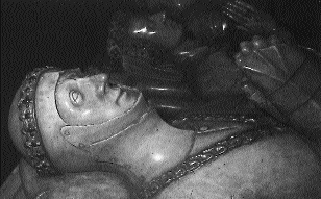
The tomb of Thomas of Lancaster in Canterbury Cathedral. (Courtesy of the Dean and Chapter of Canterbury Cathedral)
The agreements made by the Irish with Thomas began to break down after the beginning of his financial problems. All the submissions were received within the first year of his arrival, while he still had money to pay his troops. From the summer of 1402 we hear reports of desertions due to a lack of money for pay. This meant that Thomas no longer had sufficient military force to maintain the submissions. The main problem in trying to enforce a stable settlement was that the Irish leaders felt bound by their submissions only for as long as they could be enforced: without the maintenance of a large-scale army in Ireland on a permanent basis there was little hope for a long-term settlement.
In September 1407 le Scrope defeated a force of Irish led by O’Carroll at Callan in County Kilkenny. The following year Lancaster led an expedition into Leinster, while later in 1408 he was wounded in a skirmish at Kilmainham. After this Lancaster ordered ‘that all such as ought by their tenures to serve the king, should assemble at Rosse’. This proclamation of royal service was the prelude to a substantial campaign against the Irish of Leinster, and the Earl of Ormond was issued with safe-conducts to serve the lieutenant ‘with all his power both of horsemen and footmen’. These military actions indicate that despite the submissions made to Thomas during his first year in Ireland the military situation had rapidly deteriorated during his absence. The fact that the Irish who had submitted had done so for their own reasons, combined with the absence of a substantial English military force, meant that little could be done to enforce the submissions.
Lancaster’s financial crisis
Despite the fact that he had only arrived in Ireland in November 1401, by November 1403 Thomas of Lancaster was back in England. His original indenture of June 1401 stipulated that he was to receive an annual salary of 12,000 marks. However, payments to Lancaster rapidly fell into arrears. In August 1402 we find the Archbishop of Dublin and other members of the Irish council writing to the king that ‘your son is so destitute of money that he has not a penny in the world, nor can borrow a single penny, because all his jewels, and his plate, that he can spare of those which he must of necessity keep, are spent and sunk in wages’, as a result of which ‘his soldiers are departed from him, and the people of his household are on the point of departing’. They also claim that Ireland can in no way afford to support the charges of Lancaster’s household and retinue, and they ask Henry IV for the speedy remedy of the situation. It was probably as a result of this letter that in December 1402 Lancaster was promised over £6,500. However, he seems to have received less than £1,500 of this sum. In February of the following year we find Lancaster himself writing to his father, saying that his soldiers were deserting and claiming ‘that they could no longer serve unless they had payment of their wages’ and that if nothing was done then ‘great damage may accrue to me and to your said country’. These letters probably account for the measures taken in June 1403 when it was decided by the king that Lancaster should receive his salary from the customs of the port of Kingston-on-Hull. This grant also entitled Lancaster to receive his arrears of payment, which by this stage amounted to over £9,000. However, despite the good intentions of the king only £1,000 seems to have reached Ireland. The financial situation did not improve and in November of that year Lancaster left Ireland, not to return until 1408.
During his absence Ireland was governed by Stephen le Scrope as deputy. He was also in England between March and October of 1404, having left Ireland without appointing a deputy. Throughout this period James, third Earl of Ormond, acted as justiciar by appointment of the Irish council. Le Scrope returned to England once more in 1405, having appointed Ormond as his deputy. Ormond had also experienced financial difficulties when acting as justiciar and in March 1404, almost immediately after his appointment by the Irish council, he was forced to write to the king and English council claiming that he was unable to support himself as justiciar, due to expenses which he had previously incurred in the reign of Richard II and earlier in the reign of Henry IV. On his death in September 1405 he was replaced by the Earl of Kildare, who acted as justiciar until the return of le Scrope in 1406.
Lancaster’s position undermined
On 1 March 1406 Lancaster agreed to a new indenture to serve as lieutenant in Ireland for twelve years at a reduced salary of £6,000 per annum. However, this new rate of pay was also found to be impractical to maintain and a new indenture was agreed upon in March 1408, whereby Lancaster agreed to serve as lieutenant for three years. Perhaps the reason for this indenture was the departure from Ireland in December 1407 of Stephen le Scrope, resulting in the appointment of the fourth Earl of Ormond, who was still a minor, as justiciar by the Irish council. Le Scrope returned to Ireland with Lancaster in August 1408, dying of the plague that September. Lancaster himself returned to England in March 1409 on hearing news of a serious illness affecting his father. He left Thomas Butler, prior of the Hospital of St John of Jerusalem at Kilmainham, as his deputy.
The evidence would suggest that Thomas of Lancaster continued to draw on his salary as lieutenant of Ireland while in England, leaving the administration in Dublin to fend for itself. In the English parliament of 1406 the commons complained that despite the unprecedented sums being spent on Ireland ‘the said land is not in any better order, safe-guard or disposition’. This would seem to indicate that money earmarked for Ireland was being used to cover the expenses of Thomas of Lancaster. This led to tensions between Thomas and his elder brother, Henry, Prince of Wales. In 1409 at a meeting of the Privy Council, Prince Henry and his allies on the council requested the replacement of Thomas as lieutenant of Ireland by Sir John Stanley.
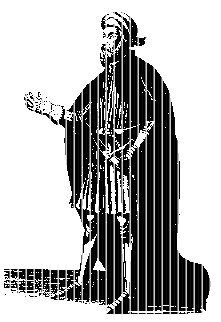
Knight Hospitaller of St John of Jeruslem-Lancaster was based at their priory in Kilmainham, 1408-9.
In order to recompense Lancaster for his proposed removal from office in 1409 it was suggested that Stanley pay him 2,000 marks per annum from the revenues of Ireland, while the king was to pay him 1,000 marks per annum. The following year, when the Prince of Wales was in control of the council, Thomas petitioned for the payment due to him for service in France and for the payment of £3,000 arrears due to him as the lieutenant of Ireland. In reply to the last request the council said that if Thomas would perform the articles in his indentures then the prince and the other lords of the council would do their utmost to ensure that payment was made to him. Lancaster did not return to Ireland and the following year his father was able to regain control of the council, removing the pressure on Thomas to fulfil his duties as lieutenant.
A legacy of failure?
His position as the king’s son meant that Lancaster was able to avoid the responsibilities pertaining to his office on an unprecedented scale. His absenteeism could be excused on the grounds of his youth, but his brother Henry, who was a year older, was serving in Wales at the same time, while his brother John, who was a year younger, was serving on the Scottish border. His absences could also be excused on the grounds of his financial difficulties. However, not only was he able to avoid service in Ireland but it seems that he continued to receive his salary while in England, without having made adequate arrangements for the government of Ireland during his absence. Lancaster was able to use his position to receive privileged treatment accorded to no other chief governor of Ireland. Once it was obvious that the English exchequer could no longer afford to support Lancaster he could achieve little in Ireland, and this, rather than the desire to avoid his responsibilities, seems to have been the principal reason behind his return to England. This should not detract from his achievements while serving in Ireland. He had set a precedent for what could be accomplished in the lordship—provided the financial backing was available from England.
Brian Blacker is a part-time lecturer in the Department of Medieval History, Trinity College, Dublin.
Further reading:
J. Lydon, The Lordship of Ireland in the Middle Ages (Dublin 1972).
R. Frame, ‘The defence of the English lordship, 1250-1450’, in T. Bartlett and K. Jeffery (eds), A Military History of Ireland (Cambridge 1996).
J.L. Kirby, Henry IV of England (London 1970).
















